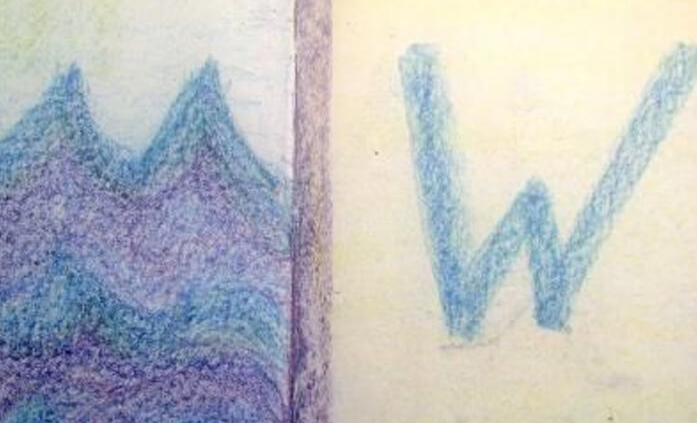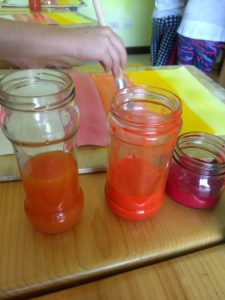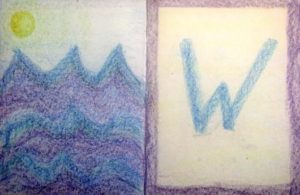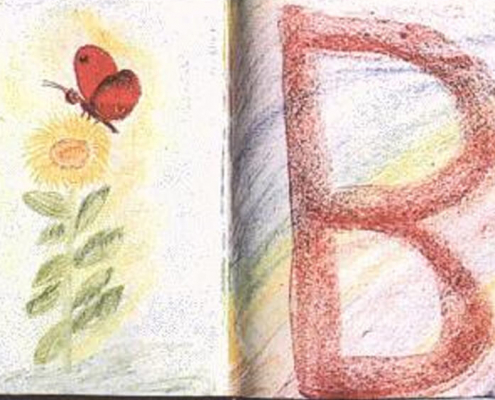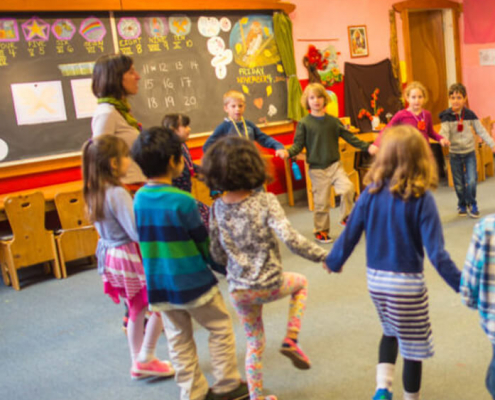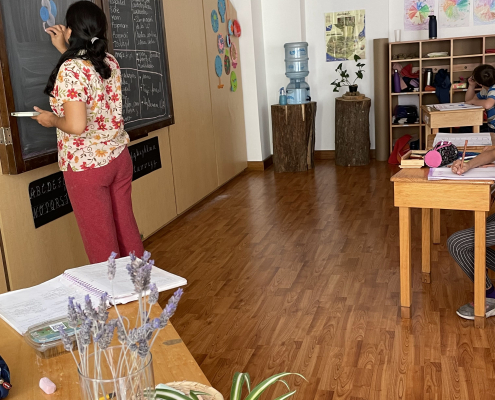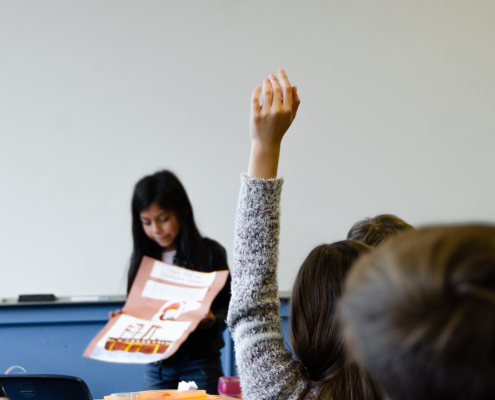First grade overview
Ideally, the child enters the school at about seven years of age and is ready to detach himself gradually from the young child’s imitation phase which, however, still projects itself into the first school years. The beginning of the change of teeth has made this stage visible. As the morning verse of the lower grade says, the child desires to “work and learn.” But for the teacher it is important to recognize the particular kind of desire to learn for which the first grade is ready. Detachment from the first seven-year period does not occur abruptly, but rather it takes place during the first school years. Thus, the first school year will still be marked by a dreaming living in the world and with other people, as it is brought to expression in the mood of the fairy tales.
In the first school years, the child has great joy in movement, rhythm, and rhyme. The child picks up poems, verses, and songs very quickly and very easily learns the beginning of the multiplication tables completely out of the rhythmical movement. The forces of imitation from the first seven-year period still work on strongly. We make use of them when we begin right away with a foreign language, have the child play a musical instrument (pentatonic flute in the second semester) and teach knitting. The child also lives still in harmony with nature. And so, it is quite natural to the child to listen to fairy tales where animals, flowers, and clouds talk with one to another.
At this age, the memory can take in a lot and needs to be cultivated but not in an exhausting way through constant questioning and checking. Much can be impressed on the memory by bring the material with strong feelings of sympathy and antipathy, that is, with love for the true, the beautiful and the good, and aversion of the false and the evil, so that the child’s soul can breath in and out in a healthy way.
Content of the Main Lesson
Since the arts have a positive effect on the child’s development it is woven in all the teaching let us begin with
Form Drawing
During the first weeks of school the first graders learn the form elements of the straight and curved line, form elements that are encountered again later on in the writing block as the Latin printed letters. After the first introduction with examples, the exercises begin. It is also a matter of making the child conscious of the various spatial directions. After the vertical, horizontal, and diagonal are practiced in many possible ways, the focus is on angles, triangles, rectangles, and star forms. Later on, exercises are done with semicircles, circles, spirals, and ellipses.
Painting
Watercolor painting accompanies the child throughout the years of grade school and will be taught for a double period once a week. What is important in the first years is that the child learns to experience the rich world of colors, the quality of colors, and learns that each has its own language. At first only the primary colors, yellow – red –
blue, are used in various shades. Later on, the child also uses the mixed secondary colors. By applying the color to a large sheet of painting paper the child immediately falls under the “spell” of the color. By painting the child learns to feel how the color agree with each other and to experience the more beautiful color tone as compared to the less beautiful one. The children will learn to feel the dignity of red, the gentleness of blue, the liveliness of yellow and so be nourished and strengthened in their soul.
Music
Stories create the background for musical listening and feeling, all in the pentatonic scale. The songs are also oriented to the seasons and festivals of the year and are learned by imitation. Singing and movement still from a unity. The music has a harmonizing effect on the soul of the child through an alternation of doing it oneself and listening.
Language, Recitation
We acknowledge the strong need of the first grader to move and so we accompany the speaking of poems and verses with steps and meaningful gestures. The poems will be introduced carefully and memorized as we recite them repetitively.
Writing
The child in the Waldorf School comes slowly to learning to write and only a bit later to read. First the doing, then the understanding. The forms of the upper case Latin letters arise in an artistic way out of pictures and stories. If, for example, a fish in the water is drawn, after the story has been told, this picture undergoes a gradual change to develop into an F, and the waves of the water into a W. In doing this we use the language as a help and let the sound be heard in little verses. In this way, we guide the child through picture, language and writing as close as possible to the sound.
Reading
At the beginning of learning to write, there is often little desire of the children for to read what they have written. This should not be asked of them, for reading is a far more abstract activity than writing. However, simple words will be spoken from the written text and spoken back in chorus. There are two ways used to approach reading. A synthetic way, composing the word out of single letters as introduced through stories. From the letter to the word. And there is the analytical way, beginning with the whole sentence, taking up the individual word and in the word the individual sound. There will be not much grammar yet, however, foundation will be laid by reciting of verses and poems and by listening to stories being told as well as read to the students by the teacher.
Arithmetic
Before any arithmetic can be done the children must be able to count. First, we count with fingers and toes up to 20, then further up to about 100. As soon as the sequence of the numbers has been mastered we begin with rhythmical work by having the children speak and clap softly and loudly, by running and skipping. At the same time that we are counting we also bring the qualities of numbers to the child: one world, one “I”, two arms, three parts of the arm, four limbs, five fingers, six in the honeycomb, seven days of the week, eight legs of the spider. We use the Roman numerals in the beginning, as they are related to the human body: One hand is the V or five, two hands crossed the X or ten. For the beginning of arithmetic, we will be using manipulatives like marbles. The students are asked to regroup a number of marbles, say 15. They are asked to make different little piles of them, and they will come up with many different solutions: 15=3+5+7, or 15=4+9+2, and so on. This has quite different effect than asking 3+5+7=? Out of rhythmical counting arise the odd and the even numbers, and out of this very naturally the 2 times table. By the end of First grade students will be able to recite the 2, 4, 5, 10, and 11 times tables. Beside counting and the times tables we will be focusing on the four processes: Addition, subtraction, multiplication and division, all arising out of stories, characters to which the children can relate.
Written by Mr. Hans, our Pedagogical Director. Also, using study material of the Pedagogical Section at the Götheanum in Dornach, Swizerland
